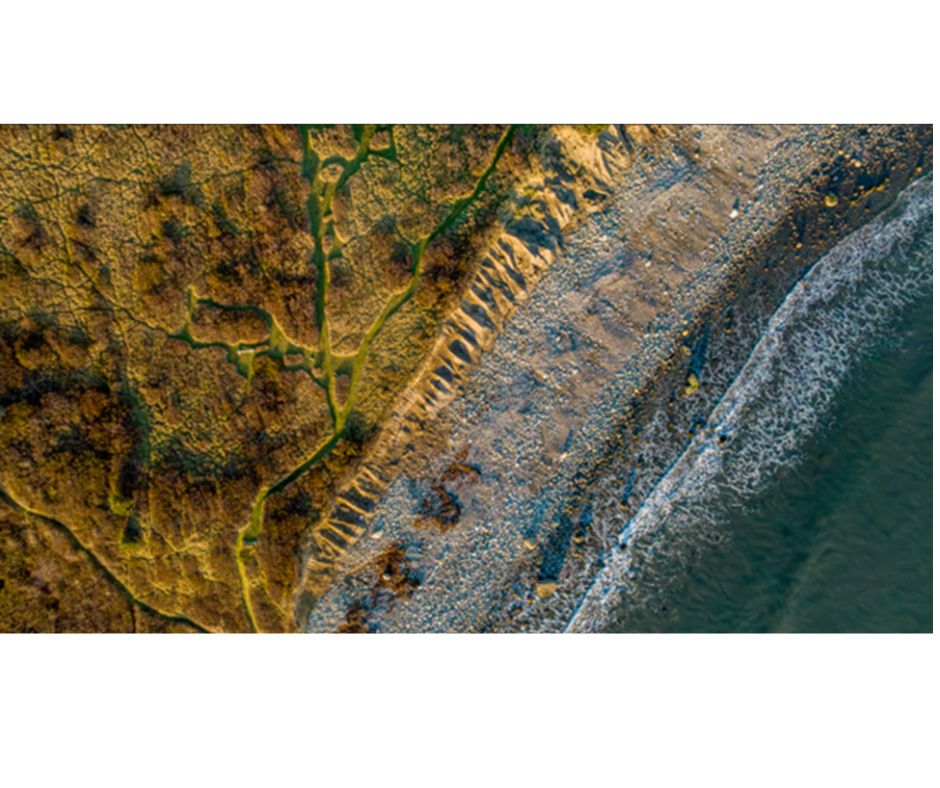In 2019, the Nova Scotia Government passed the Coastal Protection Act (CPA) – the first of its kind in Canada. For more than a decade, the Ecology Action Centre (EAC) has been working with organizations, coastal community members and the public toward the realization of this vital legislation.
On Feb. 26, 2024, the provincial government shelved the act in favour of The Future of Nova Scotia’s Coastline: The Plan to Protect People, Homes and Nature from Climate Change Along Our Coast. This is a complete failure of leadership and is another attempt to pass responsibility on to municipalities and individual citizens. The CPA regulations would have been the first step in helping to make our coastal ecosystems more resilient so they can adapt and protect us.
The CPA would:
- Provide protection for our vital coastal ecosystems
- Eliminate inappropriate coastal development
- Preserve the dynamic and resilient nature of our coasts to better withstand climate change
Introduction to the Coastal Protection Act
Introduction to the Coastal Protection Act
Should regulations be implemented, the CPA would create a coastal protection zone. This would regulate all development on lands within a certain (to be determined) proximity of the shore. Through the use of property-specific assessments carried out by designated professionals under the act, people looking to develop within the coastal zone would receive a minimum horizontal setback from the water, and be required to meet minimum building elevation above sea level standards. This is an excellent way to address and regulate the wide variety of coastal geography in Nova Scotia.
The EAC has been working with groups across Canada and internationally to identify best practices for implementing the CPA. We will also be championing the voices of communities across the province on issues such as undersized lots. We will ensure that regulations specifically address these pressing challenges.
We will be seeking updates to the current on-site septic system and well regulations to address gaps. The CPA would do a great deal to protect new building development from erosion and sea-level rise, but may not address the location of septic systems and wells. As these are subject to the same threats as houses and cottages, they pose a significant risk to the environment and homeowners if breached.
Delays to the CPA and Regulations
Delays to the CPA and Regulations
The CPA received full party support, legislative approval and received royal assent in April 2019. Significant public consultation was carried out in September 2021. Municipalities, professional groups and coastal property owners were consulted throughout the regulation development process.
During the 2021 election, in the 2022 Climate Plan and in the aftermath of Hurricane Fiona, the Progressive Conservative government promised that they would complete and implement the CPA regulations in 2023. Even though increasingly severe climate impacts, including multiple hurricanes and flooding events, continue to batter our coasts, in August 2023 the province abruptly announced that the regulations would be delayed until at least July 2025, and that in the meantime municipalities could pass their own bylaws.
In October 2023, the province released an online survey targeting coastal landowners. While public consultation is extremely important, the survey was filled with board and leading questions that covered information obtained through extensive previous consultation and studies.
At the end of February 2024, the province announced that it would not proclaim the CPA, and instead released a three-year plan, essentially offloading all responsibility to municipalities and individuals.
Consultations and Public Pressure
Consultations and Public Pressure
The EAC mobilized over 1,100 Nova Scotians to send letters to the provincial government, all calling for immediate action on the Coastal Protection Act (CPA) regulations.
In October 2023, the province released an online survey targeting coastal landowners. While public consultation is extremely important, the survey was filled with board and leading questions that covered information obtained through extensive previous consultation and studies. The EAC filled out the survey and mobilized Nova Scotians to do the same, telling the province that the continued delay was unacceptable.
The EAC held a press conference on Oct. 24, 2023 on the steps of the Halifax waterfront, calling on the Nova Scotia government to fully implement the CPA regulations and, in doing so, take the very first and most basic step in coastal climate adaptation: stop building in known risk areas. Watch the press conference below.
The province’s continued delay of the regulations unfairly offloads labour and costs onto Nova Scotia’s municipalities. On Nov. 6, 2023, 12 Nova Scotian municipalities joined the call for the province to fully implement the CPA regulations.
Five municipalities – Town of Bridgewater, Town of Clark’s Harbour, Town of Digby, Town of Kentville and Town of Lunenburg – signed on to a joint statement organized by the EAC. Read the joint statement here.
Another six municipalities – the District of Chester, Kings County, Town of New Glasgow, Town of Trenton, West Hants Regional Municipality, and Region of Queens Municipality – sent their own letters. Pictou County signed the joint statement and sent their own letter to Minister Halman. Read some of their letters here.
As of Nov. 8, the Town of Pictou had also written their own letter, bringing the total to 13 municipalities.
On Nov. 8, 2023, the provincial Liberal party brought forward a bill calling for the implementation of the Coastal Protection Act regulations.
How you can take action
How you can take action
- Call your MLA. Not sure who your MLA is? Find them here.
- Stay up to date. Read some of the news coverage about the Coastal Protection Act featuring the EAC below and read more here.
- Subscribe to our enewsletter to make sure you are informed about more ways to take action!
Media coverage
-
EAC's Marla MacLeod discusses the N.S. government's recent coastal protection survey (The Todd Veinotte Show – March 11, 2024)
-
Killing Coastal Protection Act risky, says Ecology Action Centre (CBC News – Feb. 27, 2024)
-
EAC's reaction to the provincial government scrapping the Coastal Protection Act (Information Morning – Feb. 27, 2024)
-
Video: New N.S. coastal protection plan shifts responsibility to homeowners, municipalities (Global News – Feb. 26, 2024)
-
N.S. government scraps Coastal Protection Act (CBC News - Feb. 26, 2024)
-
N.S. still won’t commit to proclaiming Coastal Protection Act (Global News – Nov. 7, 2023)
-
Municipalities call on Nova Scotia government to proclaim Coastal Protection Act (CBC News – Nov. 7, 2023)
-
Enviros press Nova Scotia to pass Coastal Protection Act (National Observer - Oct. 24, 2023)
-
Ecology group says long delay in law to protect Nova Scotia's coast is 'recklessly irresponsible' (Toronto Star – Oct. 24, 2023)
-
‘I think we really need to change our mindset’: Proximity to the sea is becoming increasingly costly, and dangerous (CTV News Atlantic – Sept. 19, 2023)
-
It may be time to say goodbye to the house with an ocean view (National Observer - Sept. 5, 2023)
-
Reaction to news the Coastal Protection Act will not be proclaimed until at least 2025 (Information Morning – August 2, 2023)
-
N.S. government 'dishonest' about delays in enforcing Coastal Protection Act, EAC staffer says (Saltwire – July 28, 2023)
-
First at Five: Coastal Protection Act – we learn about a call for urgent action to protect our vulnerable coastlines (CTV News Atlantic – April 3, 2023)
-
Advocates say the Coastal Protection Act doesn't do enough for climate change (CBC Information Morning – Aug. 2, 2022)
-
How N.S. Coastal Protection Act could impact future development (CBC News Video - June 16, 2022)
Background
Background
Why Nova Scotia needs coastal legislation:
Our coast is invaluable. Nova Scotia’s economy, our way of life, and our cultural heritage are intricately connected to our coastline. We rely on it not just for development, but for recreation, transportation and tourism, for sustaining fisheries, and as a habitat for coastal species. We need to ensure that our coastline continues to protect and nourish us, to employ, and entertain us.
Preparing for climate change, rising sea levels, and more frequent and severe storms will not only save money but will also decrease the risk to life and infrastructure. United Nations reports show that every dollar invested in pre-emptive climate adaptation can save up to seven dollars in relief and recovery down the road. When Hurricane Juan ripped through Halifax, over $100 million in damage was left in its wake. With the increased frequency of dangerous storm events, provincial dollars are better spent investing in preemptive solutions.
Narrative Research Polling 2024
The Ecology Action Centre (EAC) has been interested in gaining a better understanding of the public's attitude regarding the Coastal Protection Act. Accordingly, polling conducted in August 2024 by Narrative Research on behalf of the Ecology Action Centre provided an insight into how Nova Scotians feel about coastal protection in the province.
The results align strongly with what the EAC is hearing from community inquiries it receives over coastal issues and from members of the Coastal Coalition NS across the province. Crucially, these numbers confirm that there is broad, continued support for the CPA across the political spectrum in 2024 as there was when the Act was passed with all party support in 2019.
The random telephone survey was conducted by Narrative Research with 400 Nova Scotians between Aug. 12 and 23, 2024. The results are accurate to within +/-4.9 percentage points, 19 times out of 20.
Coastal Futures
Rethinking Coastal Authority in Nova Scotia
We all share the coast — so let’s share its governance.

This publication (linked below) is the result of a collaboration between the Climate Justice and Vulnerabilities Lab (CJV²) and the Ecology Action Centre. The CJV² Lab examines how a diverse sample of coastal and sea-facing communities—past and present—experience climate change amid social, cultural, economic, and political inequalities.
This collaboration examines the development of coastal policies at various scales, with the goal of amplifying the voices of those historically—and currently—excluded from discussions and decision-making on coastal area management in Nova Scotia.
Repeated failures by successive Provincial governments to introduce coastal protection legislation in Nova Scotia provide future critical opportunities to recognize and address historical wrongs while working to prevent new climate injustices.
This publication is the result of a collaboration between the Ecology Action Centre and Dalhousie University’s Climate Justice: Values and Vulnerability research project. We acknowledge the support of the Canada First Research Excellence Fund for the Transforming Climate Action research program, led by Dalhousie University through the Ocean Frontier Institute (OFI), in partnership with Memorial University (co-founder of OFI), Université du Québec à Rimouski and Université Laval.
Read the publication here.
About the author:
Myles de Jong is a master’s student at the University of British Columbia and a graduate from Dalhousie University with a BA in International Development Studies. His work with CJV2 has included a review of research concerning labour and human rights issues in global fisheries, and exploring the marginalization of voices in coastal policy discourse around the world. His graduate research at UBC will focus on the socio-cultural impacts of the 2026 FIFA World Cup in Vancouver, with special attention to the decision-making processes involved in the build-up to Vancouver’s host city bid. Beyond this, he is motivated to investigate the use of sport and physical culture to achieve social, economic, and environmental development objectives, as well as the global dynamics within and among relevant stakeholders, particularly ‘Sport for Development and Peace’ organizations.

